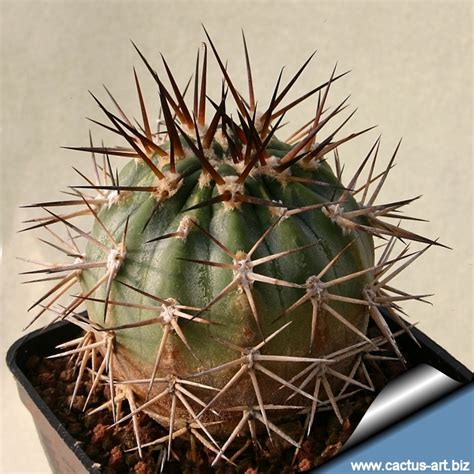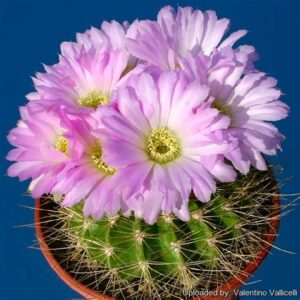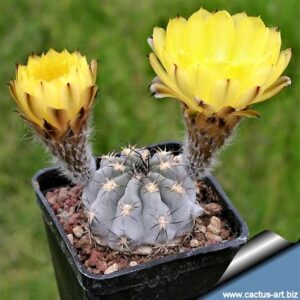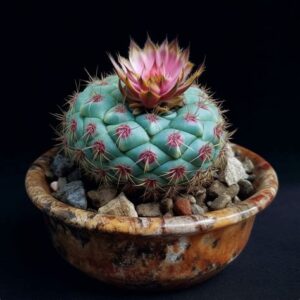Acanthocalycium griseum is a remarkable member of the Cactaceae family, encapsulating the splendid diversity inherent in the cacti of South America. This enchanting species hails from the arid regions of Argentina, where it thrives in the inclement environment that surrounds it. Known for its unique morphology and vibrant blooms, this cactus offers both horticulturists and enthusiasts an exquisite experience that transcends the mundane trappings of common houseplants.
At first glance, Acanthocalycium griseum may appear modest with its somewhat plump, globular body. However, any gardener fortunate enough to cultivate this species quickly discovers the profound character hidden within. The species epitomizes the complexities of cacti, revealing both aesthetic and ecological narratives worthy of exploration.
In this article, we venture deep into the realm of Acanthocalycium griseum, exploring its species characteristics, cultivation tips, and the interrelated challenges of horticulture and ecology. Embark on this journey to understand this fascinating plant’s allure and the wisdom it can impart to its caregivers.
Exploring the Origin and Habitat of Acanthocalycium Griseum
To truly appreciate Acanthocalycium griseum, one must first comprehend its natural habitat. Indigenous to western Argentina, this cactus flourishes across rocky terrains, where it has adapted to withstand extreme temperatures and aridity. Its resilience in the face of adversity is a testament to the evolutionary prowess of this species.
The native environment comprises sandy soils interspersed with gravel, allowing for effective drainage—an essential factor in the survival of many cacti. Extreme sunlight exposure is commonplace, leading to adaptations in both pigmentation and size. The hue of Acanthocalycium griseum often resonates with the muted tones of its surroundings, ranging from olive green to more vibrant shades under optimal conditions.
Though the species can endure harsh climates, it also exhibits exquisite morphology that captivates the notice of observers. The thick, ribbed stems form a resilient candlestick shape, with each rib adorned with small, bristly spines that serve both protective and aesthetic purposes. When conditions are favorable, particularly during the warmer months, the plant bursts into bloom, presenting vivid flowers in shades of yellow, pink, or red. These ephemeral beauties serve as a crucial draw for pollinators, making Acanthocalycium griseum a vital component of its ecosystem.
Aesthetic Appeal: The Beauty of Acanthocalycium Griseum
The aesthetic appeal of Acanthocalycium griseum cannot be overstated. Its profile is striking enough to serve as a centerpiece in any cactus collection. The contrasting textures of its spiny skin and velvety bloom offer a visual treat that can spark conversations amongst enthusiasts and casual observers alike.
As an ornamental plant, it benefits from its robust size; typically measuring around 10-12 cm in height, it provides ample coverage without overwhelming a space. The colorful flowers often bloom in late spring and early summer, featuring intricate petal formations that resemble delicate origami. These unexpected feasts for the eyes often lead people to rethink the perceived notion of cacti as merely desert plants devoid of color and elegance. This revelation sheds light on how diverse the family can be.
In addition to the visual charm, different cultivars may present varieties in spine formations and flower colors. These distinctions are crucial for collectors eager to expand their selection, validating the intricate genetic variances present within the species. Each cultivar tells a story, imbued with the history of its own growth and adaptation, hinting at the years spent navigating through the rigors of survival.
Guidelines for Successful Cultivation
Cultivating Acanthocalycium griseum requires understanding its specific needs and environmental preferences. As a species native to arid regions, mimicking its natural habitat will enhance its growth and resilience.
Soil Composition: The Foundation of Growth
For optimal drainage, a gritty mix comprising coarse sand, pumice, or perlite is ideal. A pre-packaged cactus soil is often a viable option, but mixing in additional ingredients ensures that water does not pool around the roots. Poor drainage can lead to root rot and subsequent decline, so pay close attention to the medium in which your Acanthocalycium griseum resides.
Light Requirements: Harnessing the Sun
Sufficient sunlight is paramount. Place this cactus in a bright location, ideally where it can bask in direct sunlight for most hours of the day. When grown indoors, south-facing windows often prove beneficial. Acanthocalycium griseum thrives under such conditions, promoting healthy growth and vibrant blossoming. During periods of adaptation, acclimatize the plant slowly to prevent scorch from overly intense rays.
Watering Schedule: Treading the Thin Line
Over-watering is one of the most common errors made by cultivators. Acanthocalycium griseum is equipped to withstand drought; thus, a diligent approach is warranted. Water only when the top inch of soil is dry. A thorough soak, allowing water to drain completely, followed by an extended dry period, will mimic its native environment best. In winter, reduce watering frequency to accommodate its dormant phase.
Feeding and Fertilization: Providing Nutrients for Growth
While Acanthocalycium griseum is not a heavy feeder, supplementing with diluted cactus fertilizer during the growing season can promote blooming and growth. Typically, a balanced 10-10-10 liquid fertilizer applied monthly can yield marvelous results. However, ensure that feeding aligns with the active growth season, as over-fertilization during dormancy may cause more harm than good.
Pest Management: Vigilance as a Virtue
Despite its durability, Acanthocalycium griseum is not impervious to pests. Keep an eye out for mealybugs, spider mites, and scale insects, which can wreak havoc if left unchecked. Regular inspections and the integration of neem oil or insecticidal soap can mitigate potential infestations, ensuring this species continues to thrive.
Conclusion: Embracing the Fascination of Acanthocalycium Griseum
The allure of Acanthocalycium griseum lies not only in its captivating beauty but also in its rich stories woven through survival and adaptation. These resilient plants remind us of the intricate tapestry of nature, where each life holds significance within the broader ecological spectrum. By cultivating this enchanting cactus, gardeners can foster a deeper appreciation for the complexities of life that exist within even the harshest environments. With the right care and commitment, the rewards of nurturing Acanthocalycium griseum extend beyond mere cultivation; they offer a transformative experience that brings one closer to the wonders of the natural world.





Leave a Comment